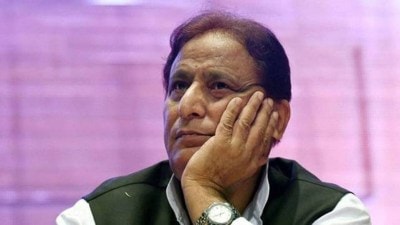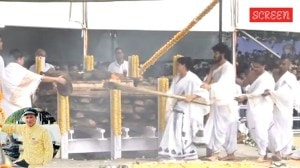Stay updated with the latest - Click here to follow us on Instagram
Renovation work in progress, Royal Opera House gets ready for second run
The foundation stone of the Opera House was laid in July 1909.
The first performance at the Royal Opera House took place on October 16, 1911, even though the construction of the theatre was still incomplete. Now, almost 105 years later, the building is being brought back to life and it awaits a formal launch in October 2016.
In 1908, Maurice E Bandmann, a renowned entertainer from then Calcutta, and Jehangir Framji Karaka, head of a firm of coal brokers, drew up the Baroque designs for the theatre, incorporating a blend of European and Indian features.
The foundation stone of the Opera House was laid in July 1909. Several features were incorporated for the convenience of patrons, including exhaust fans for better ventilation and a long frontage, where carriages could drive up to the entrance. It was built at a cost of Rs 5 lakh then.
“We are incorporating several new features like air-conditioners, fire-fighting system, acoustic consultant, lighting etc. The exterior structural repair has been completed with the interiors being repaired as of now,” said conservation architect Abha Narain Lambah, who has been appointed to resurrect the structure.
It hosted operas and live performances of artists like Bal Gandharva, Prithviraj Kapoor, Dinanath Mangeshkar and Lata Mangeshkar, and was converted into a cinema in 1935. But the Opera House eventually shut down in 1991. But the imposing presence of the structure is such that the area around the place is still known as Opera House.
The Maharaja of Gondal had bought the Opera House in 1952. His son Jyotendra Sinhji, who currently owns it, commissioned its restoration in 2009. The exterior structural repair work started in 2010 with the internal repairs only starting since last week of December.
To retain the original style of the building, minton tiles will be repaired and the marble statues, crystal chandeliers, gold ceiling and the side boxes will once again adorn the building to bring back Royal Opera House to its grandeur stature.
“The first balcony has already been repaired while work on the stage and the ground-floor seating for the visitors is presently on. We hope that it will emerge as the new center for theater lovers. But it can be used for other purposes also like film screenings, fashion shows etc,” added Lambah.
With a small restaurant by the name of Soda Fountain outside the Opera House, there are plans to open a restaurant garden cafe there.
The seepage through the roof was a major issue being faced in terms of maintenance of the heritage structure with the overhanging balconies having been declared unsafe by Brihanmumbai Municipal Corporation at one point.
“The steel had corroded, the jack arches had to be supported, the side verandahs had to be reconstructed and roof repairs had to be carried out,” said Lambah.
The Opera House was on the 2012 World Monuments Watchlist of at-risk sites.
The process of getting permissions and clearances was eventually fast-tracked after the issue was mentioned by Chief Minister Devendra Fadnavis at a seminar recently.
It was Somerset Playne, who in his book published in 1917 describes the Opera House in the paragraph such, “Messrs J F Karaka & Co are the owners of the well-known building in Bombay known as the Royal Opera House, the finest theatre in the East, and it is situated on Queen’s Road, in which are Government House and a large number of the most fashionable residences in Bombay.”







